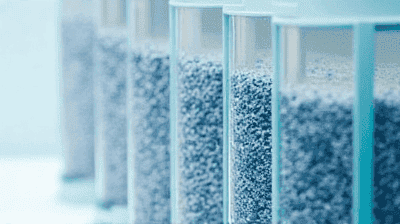
As environmental concerns about plastic pollution continue to grow, innovative technologies are stepping up to address the issue. Among the most promising solutions are nanofiber filters, a cutting-edge technology designed to effectively capture microplastics from water sources.
Microplastics are tiny plastic particles less than five millimeters in diameter that result from the degradation of larger plastic items. These microparticles can originate from various sources, including:
Degraded Plastic Waste: Larger plastic debris breaks down into smaller pieces due to environmental factors such as sunlight, wind, and water.
Synthetic Fibers: Washing synthetic textiles releases microfibers into wastewater, which can be transported to water bodies.
Personal Care Products: Many beauty and hygiene products contain microbeads, which are small particles of plastic.
Industrial Processes: Certain manufacturing processes release small plastic particles into the environment.
These tiny pollutants have infiltrated ecosystems, contaminating oceans, rivers, and freshwater supplies. Their presence poses significant risks to marine life, wildlife, and human health. For instance, research suggests that microplastics can be ingested by aquatic organisms, accumulating in the food chain and potentially impacting human consumers.

With rising concerns over microplastic contamination, there is an urgent need for effective filtration methods to remove these particles from water supplies. Traditional filtration techniques often fall short, allowing microplastics to pass through due to their small size. Therefore, there is a growing demand for advanced filtration technologies that can efficiently capture these pollutants.
Nanofiber filters represent an innovative solution to the problem of microplastic contamination in water. These filters utilize extremely fine fibers, typically measuring less than one-tenth the diameter of a human hair. The unique properties of nanofibers allow for enhanced filtration efficiencies, making them ideal for capturing small particles, including microplastics.
The functionality of nanofiber filters rests upon various principles of filtration, including:
Mechanical Filtration: Nanofibers create a dense mat that physically traps particles as water passes through the filter. Their small diameter increases the surface area for particle capture.
Brownian Motion: The movement of particles in fluid can lead to more intimate contact with the nanofibers, increasing the likelihood of capture even for smaller particles.
Electrostatic Attraction: Some nanofiber filters are engineered to have an electrostatic charge, allowing them to attract and capture positively or negatively charged particles in the water.
The combination of these mechanisms enables nanofiber filters to achieve high filtration efficiencies, making them remarkably effective at removing microplastics and other contaminants.
The adoption of nanofiber filters for microplastic capture comes with several compelling advantages:
Nanofiber filters can achieve efficiency rates above 90 percent in capturing microplastics, often outperforming traditional filtration methods. This efficiency is crucial in ensuring that clean water is available while minimizing the environmental impact of plastic pollution.
The lightweight nature of nanofiber materials allows for ease of use and installation in various settings. This flexibility makes them suitable for residential use, municipal water treatment facilities, and even portable filtration systems for outdoor activities.
Nanofiber filters typically require lower energy input than conventional filtration systems. This efficiency contributes to a reduced environmental footprint, making them an eco-friendly choice for water treatment.
These filters can be integrated into different water treatment systems, including point-of-use devices, industrial filtration systems, and water purification technologies. Their versatility makes them suitable for various applications, from home filtration systems to large-scale wastewater treatment facilities.
Nanofiber filters are more durable and long-lasting compared to traditional filtration materials. Their ability to withstand clogging means they may require less frequent replacement, leading to reduced waste and lower operational costs.

Nanofiber filtration technology is increasingly being adopted across diverse sectors due to its effectiveness in capturing microplastics and other contaminants:
Municipal water treatment facilities can integrate nanofiber filters into their systems to provide enhanced filtration for drinking water supplies. This upgrade can significantly improve water quality and protect public health from microplastic contamination.
Industries that utilize large volumes of water, such as textiles or manufacturing, can benefit from nanofiber filters. By removing microplastics from wastewater before discharge, these filters help companies comply with environmental regulations and mitigate their impact on local water bodies.
Consumers can take advantage of nanofiber filter technology in home water purification systems. Point-of-use devices equipped with these filters can provide an additional layer of protection against microplastics and other impurities, ensuring safe drinking water.
Aquaculture operations face challenges related to water quality. Nanofiber filters can help maintain water cleanliness by capturing microplastics and other contaminants, promoting healthier aquatic environments.
Academic and research institutions are exploring the capabilities of nanofiber filtration for various applications, including environmental monitoring and the development of new filtration materials. Continuous research helps enhance the effectiveness of existing technologies and pave the way for future innovations.
While nanofiber filters hold great promise in addressing the issue of microplastics in water, several challenges must be addressed to maximize their potential:
The production of nanofiber materials can be costly, which may limit widespread adoption. Research into more cost-effective manufacturing techniques is essential to reduce expenses and make these filters more accessible.
The environmental impact of the materials used to create nanofiber filters must also be considered. Developing sustainable, biodegradable materials that can produce effective filters would promote an eco-friendly lifecycle.
Research is needed to understand how nanofiber filters perform under varying environmental conditions, such as changes in water chemistry, temperature, and flow rates. Comprehensive testing can help optimize filter designs for diverse applications.
To maximize the benefits of nanofiber technology, integration with current filtration systems will be essential. Developing adaptable systems that can seamlessly incorporate nanofiber filters can help enhance the overall efficiency of water treatment processes.

The future of nanofiber filters in water treatment looks promising, with continued advancements expected in both technology and applications. As awareness of microplastic pollution increases, investments in research and development of nanofiber filtration technology will likely rise, helping to address one of the most pressing environmental challenges of our time.
Ongoing research into nanofiber materials and filtration techniques will lead to improved efficiencies, enhanced capabilities to capture a range of contaminants, and the development of new applications. Collaborative efforts among researchers, academic institutions, and industries will play a vital role in accelerating advancements in this field.
Government policies encouraging the reduction of plastic pollution and water pollution, in general, will drive the adoption of nanofiber filtration technologies. As regulatory frameworks evolve, they will likely create opportunities for innovative solutions that foster cleaner water systems and mitigate environmental impacts.
Raising public awareness of microplastic pollution and the technologies available to combat it is crucial. Consumer demand for safe drinking water and environmental responsibility will encourage the adoption of advanced filtration technologies like nanofiber filters.
Tackling water pollution requires global cooperation and collaboration among governments, industries, and communities. Addressing microplastic pollution effectively will involve collective efforts to develop, implement, and promote the use of nanofiber filters across different sectors.
Nanofiber filters represent a groundbreaking approach to capturing microplastics and ensuring clean water for future generations. Their exceptional filtration efficiency, versatility, and potential for application across various sectors make them a valuable tool in the fight against water pollution. As technological advancements continue and public awareness grows, the potential for nanofiber technology to contribute to sustainable water management and environmental health will only increase.
The path forward involves addressing the challenges associated with costs, material sustainability, and integration into existing systems. With concerted efforts among researchers, policymakers, and communities, nanofiber filters can play a pivotal role in shaping a cleaner, sustainable future, free from the burdens of plastic pollution.